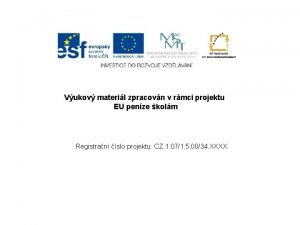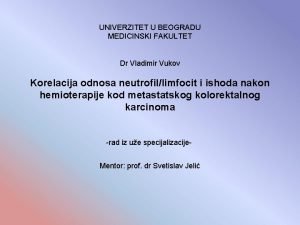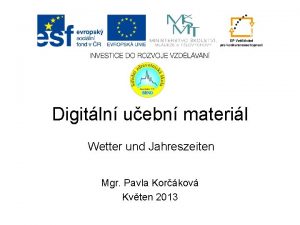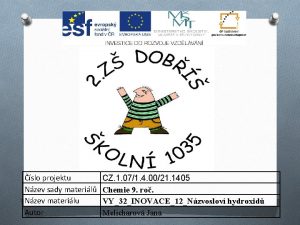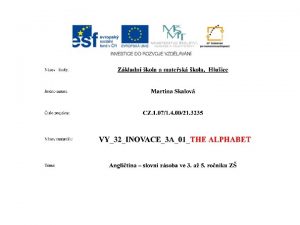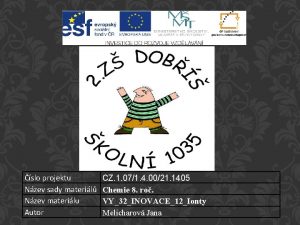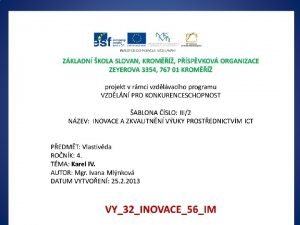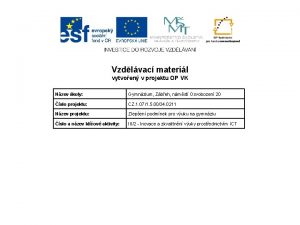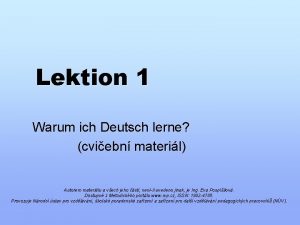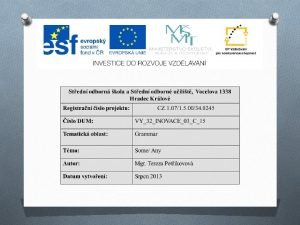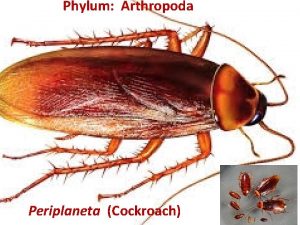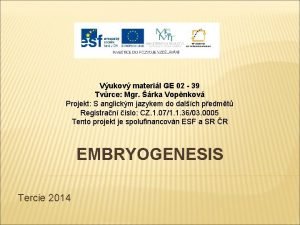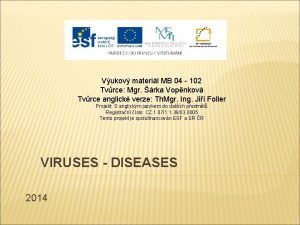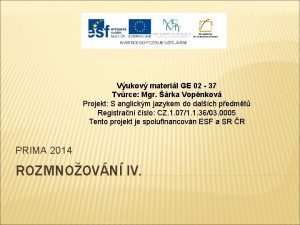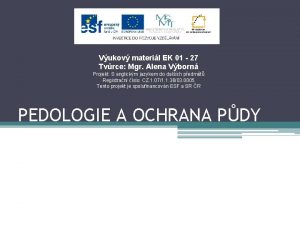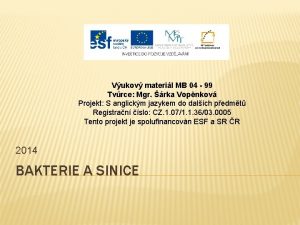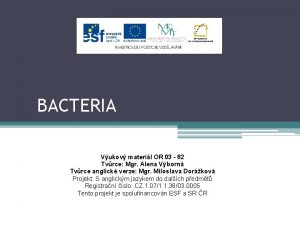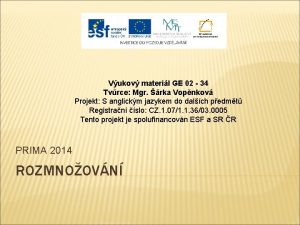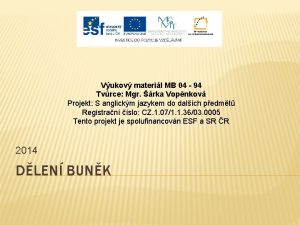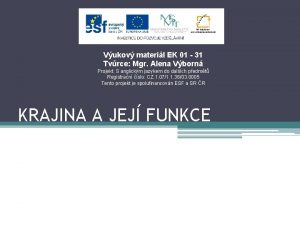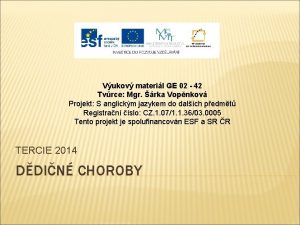ARTHROPODA Vukov materil OR 03 71 Tvrce Mgr














- Slides: 14

ARTHROPODA Výukový materiál OR 03 - 71 Tvůrce: Mgr. Alena Výborná Tvůrce anglické verze: Mgr. Miloslava Dorážková Projekt: S anglickým jazykem do dalších předmětů Registrační číslo: CZ. 1. 07/1. 1. 36/03. 0005 Tento projekt je spolufinancován ESF a SR ČR

ARTHROPODA • More than 1 million species • The most numerous group of the animal kingdom • A segmented body • The segments are joined into units: ▫ Head ▫ Thorax ▫ Abdomen • The units of some arthropoda can merge

ARTHROPODA • Limbs are segmented • They are changed into mouth organ and feelers on the head • They are used for movement on the thorax • They are used for different purposes on the abdomen – reproduction… • The body is covered by one layer of epidermis – the cells of epidermis segregate a thick cuticila (chitin) • chitin – solid, hard, resistant • The body cover has a function of a skeleton which muscles are set to

ARTHROPODA • An external skeleton must be taken off during the growth • The period of growth is limited • Breathing: • By the whole surface of the body • By gills • By pneumatocysts • By spiracles

ARTHROPODA • Sensorium: • Cone cells and rod cells (chemical and mechanical stimulations) • Eyes (compound, non-compound) • High nerve abilities ▫ instincts ▫ adaptive behaviour • They got into all biotopes

ARTHROPODA • CHELICERATA • TESTACEOUS ANIMALS • TRACHEATA ▫ ▫ DIPLOPODA CHILOPODA COLLEMBOLA INSECTA

ARTHROPODA - CHELICERATA SPIDERS SCORPIONES • Tropic, subtropic • A venom gland on the abdomen • An euscorpius tergestinus PSEUDOS CORPIONES • In our country • A venom gland on the small claws • A cephalo thorax and an abdomen • Nets • An extracorporeal digestion • A cross spider • A lycosa (a wolf spider) • A misumena (a flower crab spider) HARVESTMEN • They do not make nets • Autonomy (the ability to separate out a part of the body) ACARI • Parasites • A castor bean tick • An itch mite • Spider mites

ARTHROPODA - CRUSTACEANS • • Fresh waters, salt waters A stone crayfish A noble crayfish A crab A crayfish A prawn They are a part of plankton – cyclopoida, cladocera (water fleas)…

ARTHROPODA-TRACHEATA SPRINGTAILS MILLIPEDES • They live under stones • The body is covered by a shell • A glomeris • A polydesmus CHILOPODA • An oblate body • There is a pair of limbs from each segment • They have a spring system on the abdomen • They eat algae, fungi • They live in the soil • A tomocerus

ARTHROPODA–TRACHEATA - INSECTA • Head, thorax, abdomen • HEAD: • Antennae, mouth system, eyes (compound, noncompound) • Mouth apparatus– biting, licking, sucking, sting sucking • THORAX: • Three pairs of segmented limbs • Two pairs of wings

INSECTA HMYZ – MOUTH APPARATUS ÚSTNÍ ÚSTROJÍ C) biting • • • D) sucking E) sting sucking F) licking

INSCESTA – LIMBS HMYZ – KONČETINY G – a walking leg H – a jumping leg CH – a digging leg I – a predatory leg J – a swimming leg K – a swimming leg L – a climbing leg

REVISION: • 1) The body of arthropoda is divided into… • 2) On the skin there is created a solid … • 3) Do arthropoda have an internal skeleton? • 4) How do spiders differ from harvestmen? • 5) Cyclopoida and cladocera are a part of…

Source: • DOBRORUKA, Luděk J. Přírodopis pro 7. ročník základní školy. 1. vyd. Praha: Scientia, 1998, 152 s. ISBN 80 -718 -3134 -4
